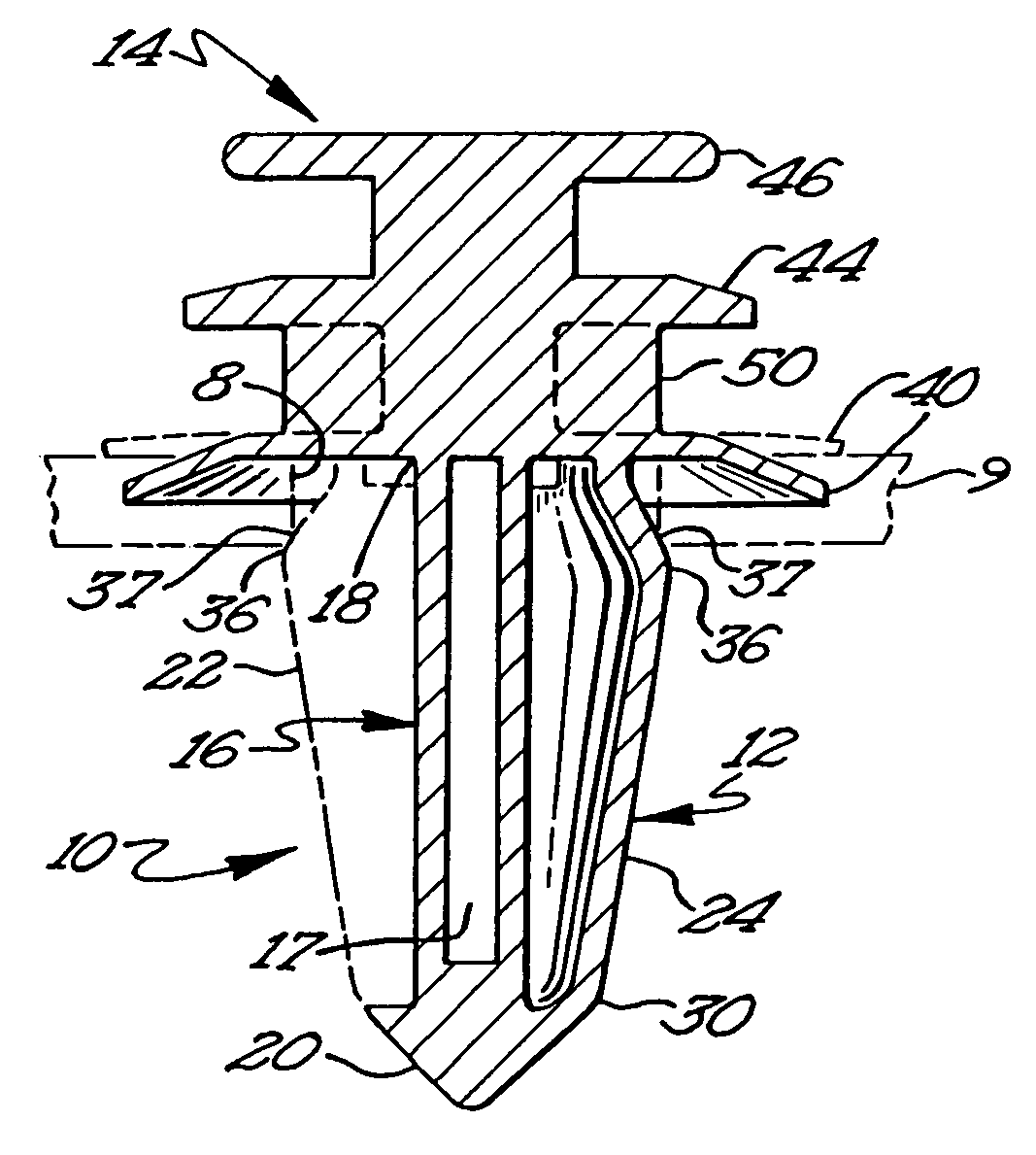One-piece reusable plastic fastener
a plastic fastener and one-piece technology, applied in the field of plastic fasteners, can solve the problems of difficult to remove from the substrate, correspondingly difficult to insert the fastener into the bore formed through the substrate, and difficult to withdraw, so as to achieve the effect of lowering the for
- Summary
- Abstract
- Description
- Claims
- Application Information
AI Technical Summary
Benefits of technology
Problems solved by technology
Method used
Image
Examples
Embodiment Construction
[0014]Although the disclosure hereof is detailed and exact to enable those skilled in the art to practice the invention, the physical embodiments herein disclosed merely exemplify the invention which may be embodied in other specific structure. While the preferred embodiment has been described, the details may be changed without departing from the invention, which is defined by the claims.
[0015]FIGS. 1 and 2 show a front and a side view, respectively, of a fastener 10 constructed and arranged according to the principals of the present invention. Fastener 10 generally comprises a shank 12 that extends downwardly and generally perpendicularly to a head 14. The head 14 of the fastener 10 is illustrated in FIG. 2 in phantom lines to indicate that the head 14 may take many configurations and is not limited to the preferred embodiment illustrated most clearly in FIG. 1.
[0016]The shank 12 of the fastener 10 has a central structure 16 that extends the entire length of the shank 12. At a bas...
PUM
 Login to View More
Login to View More Abstract
Description
Claims
Application Information
 Login to View More
Login to View More - R&D
- Intellectual Property
- Life Sciences
- Materials
- Tech Scout
- Unparalleled Data Quality
- Higher Quality Content
- 60% Fewer Hallucinations
Browse by: Latest US Patents, China's latest patents, Technical Efficacy Thesaurus, Application Domain, Technology Topic, Popular Technical Reports.
© 2025 PatSnap. All rights reserved.Legal|Privacy policy|Modern Slavery Act Transparency Statement|Sitemap|About US| Contact US: help@patsnap.com


